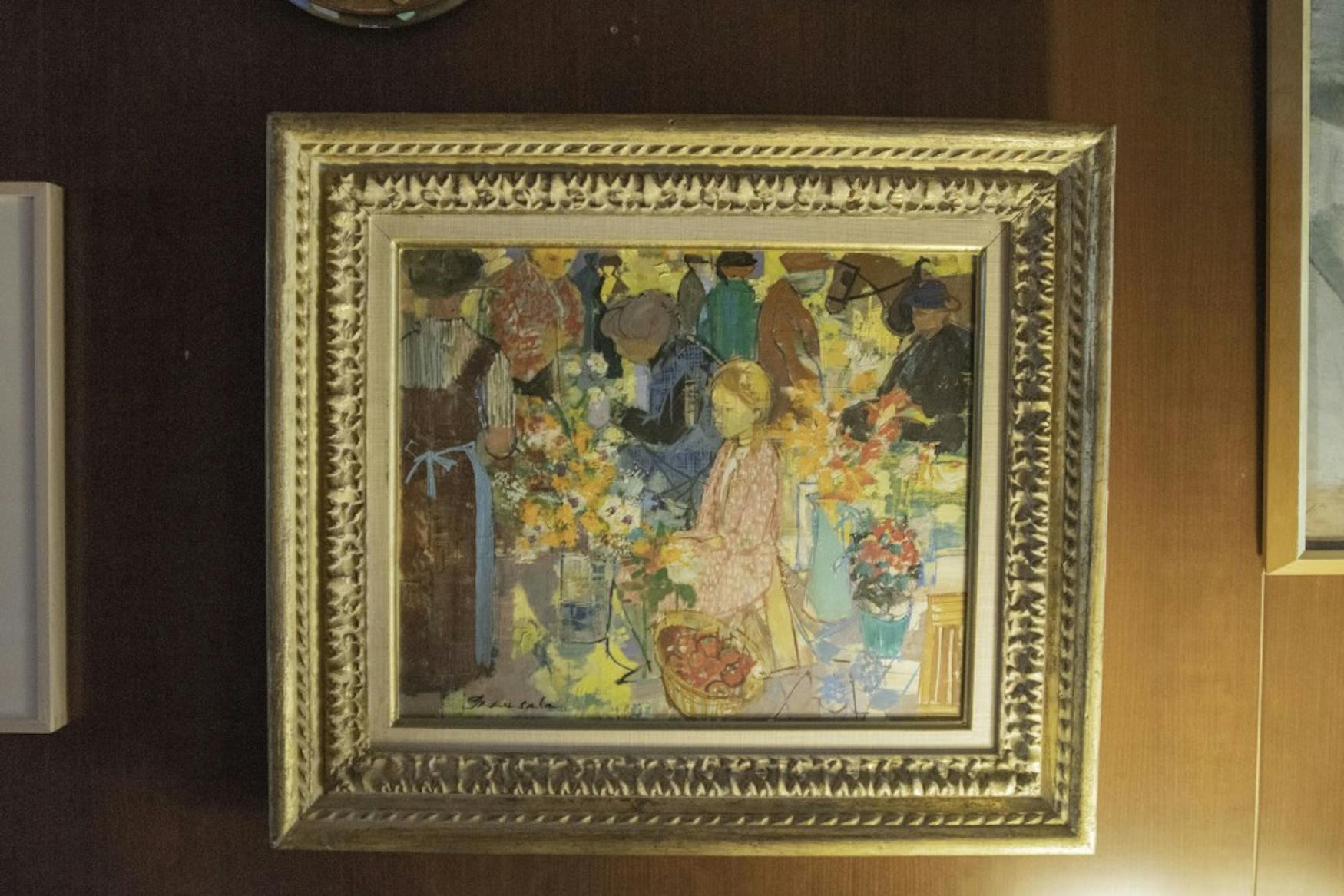Spotlight on Rose 09/17/2019
Once I stepped into The Undisciplined Collector, 2015, a 20th century style living room in the Rose Art Museum, the first work that caught my eye was the “Le Marche.”
The pleasantly light color of the flowers in the work and the strong contrast of the little girl’s pink dress against the crowd’s deep color forced me to slow down. One step closer, I stared at this painting, feeling that all my emotions were drifting for the mysteriously melancholy expression of the little girl in the center of this painting, and all my thoughts were flying to the small town of Italy.
“Le Marche” was a gift the Rose Art Museum received from Helene S. Feingold in 1994. Marche is one of the twenty regions of Italy. The painter of this masterpiece, Emilio Grau Sala, was one of the most famous colorists and illustrators in Spain during the period of the Spanish Civil War. As a member of the group of Maurice Boitel, his art style was strongly influenced by the French “La Jeune Peinture (Young Picture)” movement.
Grau Sala presents this oil painting to us with strong color contrast. The colors of the crowd are deep black and dark blue. However, the girl with dirty blonde hair is wearing a light pink dress with some white spots on top. By the prominent condensation function, this painting became surprisingly eye-catching.
Taking a deep breath, I slowly moved my eyes from the little girl’s face back to the whole painting. “La Marche” is certainly not a fine brushwork, it is closer to an impressionist’s free sketch. With only a few swift strokes, Grau Sala vividly depicted the excitement that flowers give to people.
This painting is more than just “colorful” or simply “eye-catching”; it is the perfect unification of color balance.
“Le Marche” also has a companion volume, “Paris, le marche,” created by the same artist in 1964.



Please note All comments are eligible for publication in The Justice.